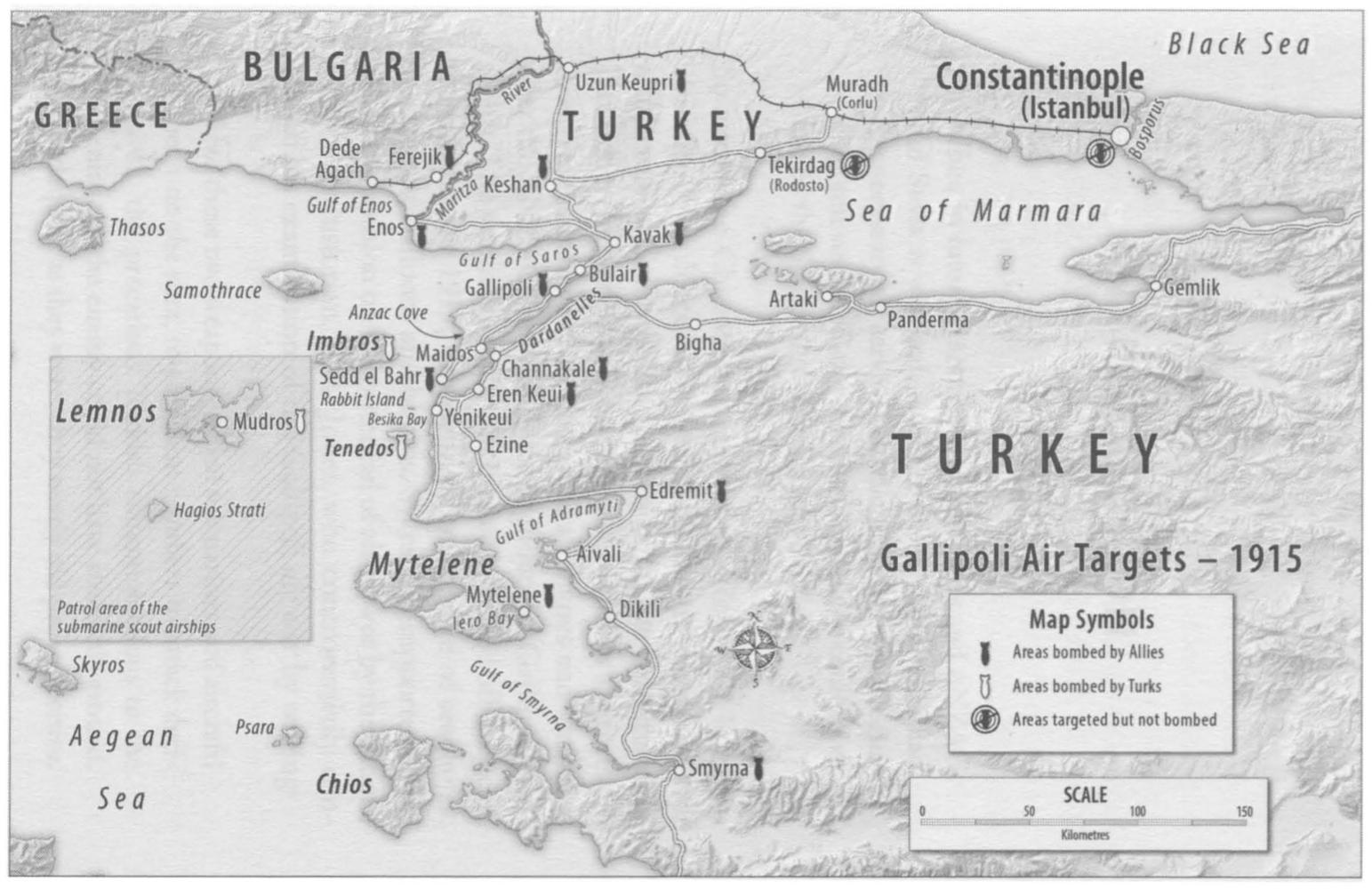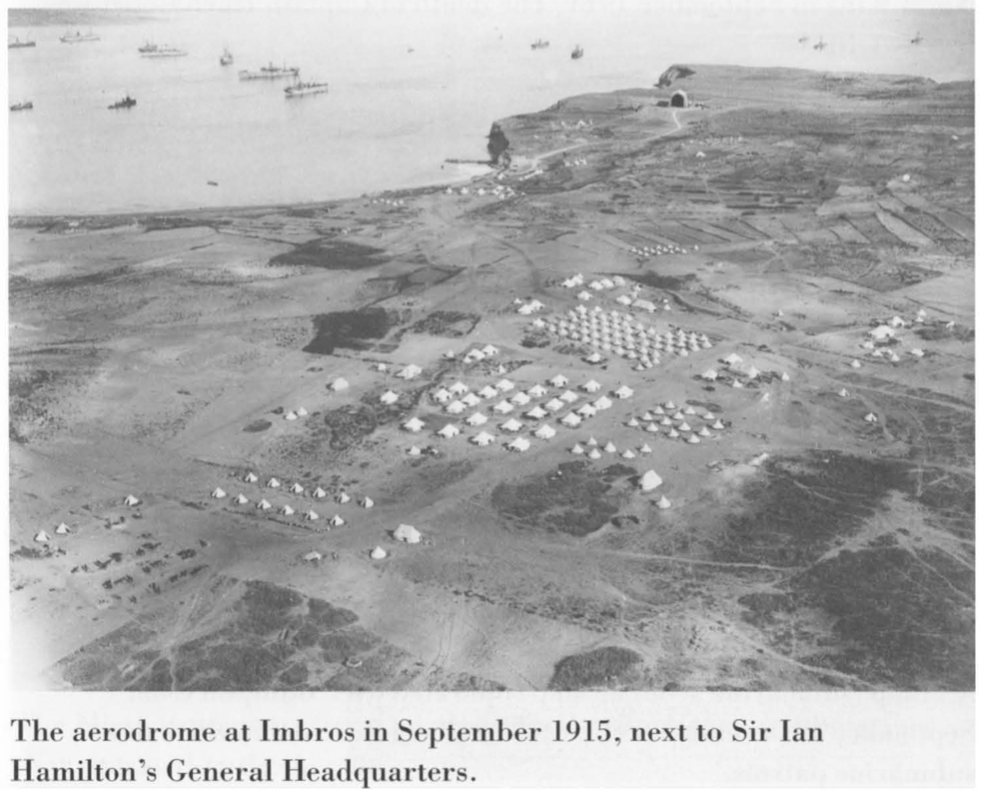The campaign in the skies above the Dardanelles was fought at the very dawn of military aviation. It was contested between Great Britain, France, Turkey and Germany. Early on, Britain deployed the 3rd squadron of the Royal Naval Air Service (RNAS) to aid in air operations at Gallipoli as well as aircraft from the seaplane tender HMS Ark Royal, which combined greatly outnumbered the Turkish air service. Aircraft used were the Short Folder Seaplane and Sopwith Schneider from HMS Ark Royal and a wide selection of current land based types including included Farmans, Nieuports, BE2C, Voisin and Bristol Scout types. Despite the severe limitations on airframe capability aircraft managed to conduct the roles of reconnaissance, close air support, bombing, and interdiction of enemy ground forces at any opportunity and to great effect.
Almost exclusively, aircraft were used in a tactical air support role. Given the relatively small size of the Gallipoli peninsula the RNAS flew over 156,000 miles over 2,600 flight hours – a considerably high tempo of operations indicating the level of importance air power was playing. The French for their part flew principally in support of their operations around Cape Hellas, serving exclusively in the tactical ground support role as well.
Turkish air power was much more limited than the resources committed by the Entente forces. Initially the Turkish 1st Air Squadron, under the command of the German Lt. Preussner, was composed of only two detachments (four aircraft) flying three Albatros B.1 and one Rumpler B.1 supported by one Nieuport seaplane. Nevertheless, this small band of flying machines performed valuable service both during the initial British naval attempt to force the Dardanelles in March 1915 and then after the April landings from their air base in Channakale.
Valuable reconnaissance work significantly aided the Turkish response to the Entente invasion. Operations involved the bombing of Allied lines and ships, conducting reconnaissance and dropping leaflets in a form of psychological warfare. In July the British conducted a raid on Channakale that all but wiped out the Turkish squadron, and with this pause in operations, they were subsequently supplied with 11 aircraft returning to the skies around September equipped with new aircraft including an improved Albatros C.1, Gotha WD 1 seaplanes based at Channakale and the new deadly German Eindecker E.I of Western Front ‘Fokker scourge’ fame.
Whilst primitive, air to air combat occurred on a number of occasions, with pilots duelling with each other by way of firing pistols and rifles from their cockpits! Needless to say, the combats were often indecisive but shoot-downs did occur! Air warfare played a vital role in many aspects of the campaign and is important part of the Gallipoli story.





